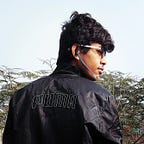Intro to Web 3.0
Before going to Web3, let’s learn about its ancestors :
Web 1.0 -: The Static Web
Web 1.0, also called the Static Web, with little to no user interaction. It is similar to plain HTML pages with no user inputs, interaction, and JavaScript. The web content only came from a select few who created the website. A static file system held the data and content rather than a database, and sites didn’t have interactivity.
Four design essentials of a Web 1.0 site include:
1- Static pages.
2- Content served from the server’s file system.
3- Pages built and sent by Server Side.
4- Frames and Tables are used to position and align the elements on a page.
Web 2.0 -: The Interactive Web
We currently use Web 2.0, with HTML5, CSS3 & JavaScript. In Web 2.0, the users can interact and add content, but the content is centralized (residing in Cloud or Database server) and less intelligent. It is also known as Social Web because the users can share content among themselves using a centralized application or site.
Features of Web 2.0 :
1- Sorting the information allows users to fetch and classify it.
2- Dynamic content that is responsive to user input/interactions.
3- Information flows between the site owner and site users utilizing evaluation & online commenting.
4- Developed APIs to allow data transfer.
5- Increased the number of users many-folds.
Web 3.0 -: Decentralized & Smart Web
Web 3.0 is a proposed third iteration of the internet that’s promised to enable a whole host of features, which most popularly may decentralize control of internet content. Web3 enhances the internet as we know it today with a few other added characteristics.
In Web3.0, developers don’t usually build and deploy applications that run on a single server or store their data in a single database. They run on either blockchains, decentralized networks of many peers to peer nodes (servers), or a combination of the two that forms a crypto-economic protocol. These apps are often called d-apps (decentralized apps). Blockchain is often associated with Cryptocurrencies but, it is much more than that. Crypto-currencies are just a part of it.
People can also earn by participating in the protocol & network in various ways. Consumers of the service pay to use the protocol, similar to a cloud provider like AWS today. Except in Web3, the transaction goes directly to the network participants rather than a single cloud provider.
Need to Decentralization in the Web:
1- Data Loss-: 2% of the links on Web2 disappear every month.
2- Data Hacks-: Web2 applications repeatedly experience data breaches. Data is then owned and controlled by the companies in charge of the platforms.
3- Monopolies-: Cloud Services Providers dominate the market. For example, AWS has control of approximately 40% of deployments. Issues in central servers can lead to misbehaving of our sites.
4- Advertising-: Companies generate revenue based on activity data. The activity history helps display the corresponding advertisements, which are mostly irrelevant.
Features introduced by Web 3.0
1- Making Money, a native feature of the internet.
2- Decentralized applications to provide users with new capabilities (like removing intermediaries).
3- Users have more control over their data and digital identities.
4- Free flow of the value.
Technocrats are expecting a new version of the web built on the blockchain, which would provide content-creators ownership of their content and allow them to monetize it accordingly. It will prevail the companies to take royalties for the content.
Web 3.0 would give each content creator a token on the blockchain every time a user accessed their content to fetch the tangible monetary value.
Proof of this-: Brave browser allows users to pay users whose content they like some cryptos, and also it provides crypto for each AD it shows.
Difference between Web1.0, Web2.0 & Web3.0
How to Build on Web3
https://proto.school/ — Interactive tutorials on decentralized web protocols.
How to Get Into Ethereum, Crypto, and Web3 as a Developer
The Complete Guide to Full Stack Ethereum Development
https://www.youtube.com/watch?v=a0osIaAOFSE
Thank you for joining me on this journey of Web 3.0. It is just the beginning with a lot more to explore ahead.
Happy Learning
To connect with GDSC follow social accounts and never miss an update :
Website | Instagram | LinkedIn | Facebook | YouTube
GitHub | Twitter | Discord Invite | Whatsapp Group
To get featured on GDSC’s Medium Page, send an email at: dscvitbhopal@gmail.com
